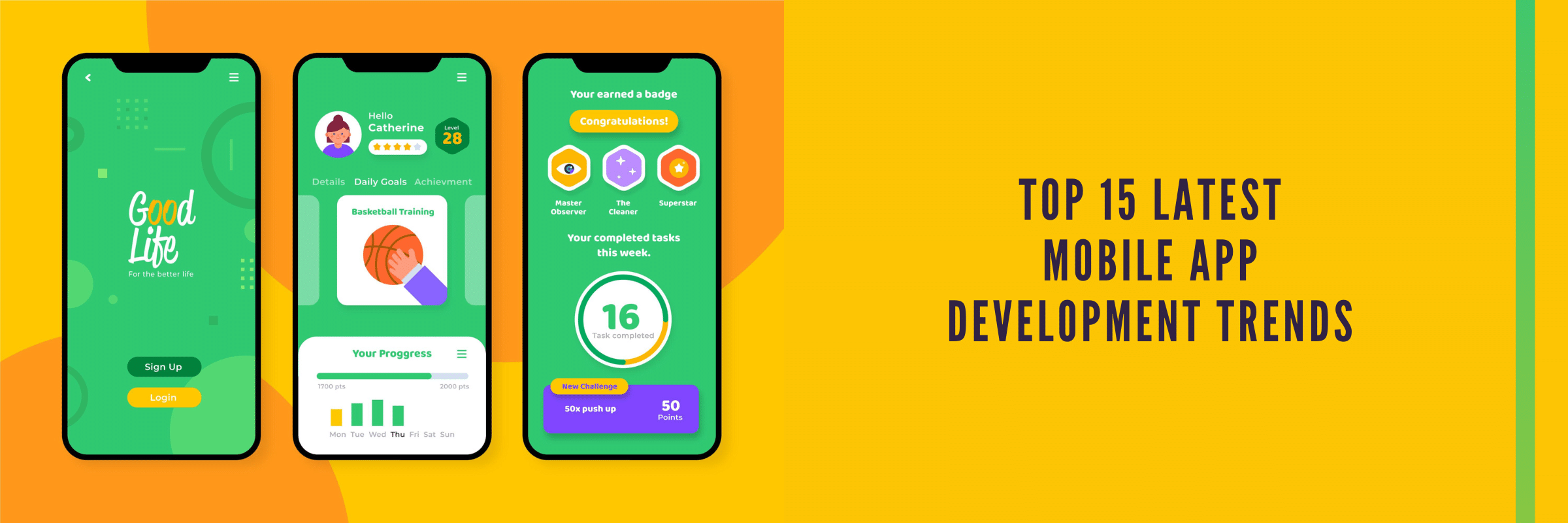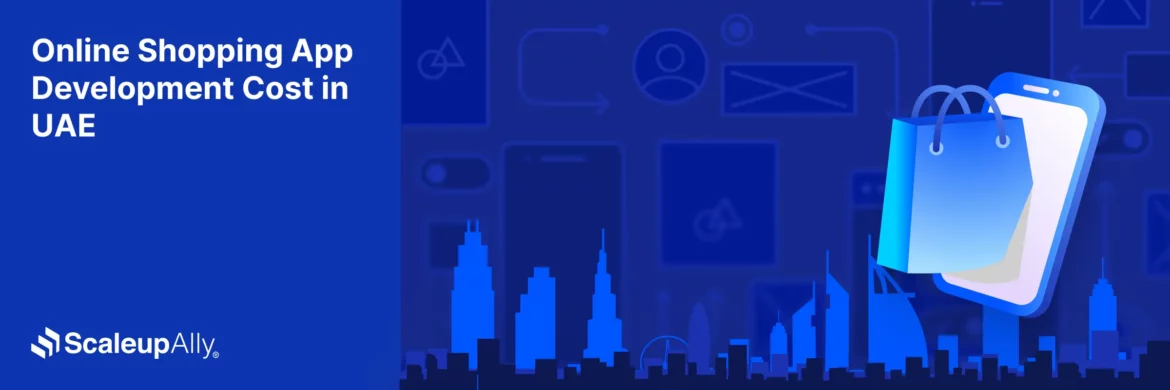
Top 15 Latest Mobile App Development Trends – 2025
Suprabhat Sen | December 30, 2023 , 10 min read
Table Of Content
How many apps do you have on your phone? Have you noticed how there’s a new feature every day? Building mobile apps is a great way to develop ideas and drive innovation. The industry is growing and offers vast opportunities. To succeed, staying updated on the latest trends in mobile app development is crucial.
2025 is the perfect time to innovate your approach to mobile app development to ensure your customers have the best experiences possible. Businesses are gaining more customers all the time. There are endless expectations from a constant flow of users. It all shows how fast the mobile app development industry is moving.
As we enter 2025, many new trends are set to change how mobile apps are developed. These include personalized user experiences and new low-code platforms that could completely change how we use and think about mobile apps.
In this article, we’ll cover everything you need to know to prepare for the future and create a successful strategy to stay ahead in the industry.
15 Latest Mobile App Development Trends
Here are the 15 most important trends in mobile app development that we identified through careful analysis of real-world data. Now, let’s take a closer look at each of these trends.
1. Personalization and User-Centric Design
User-centric design is a method that focuses on putting the needs, preferences, and experiences of users first. This approach involves studying how users behave, researching their needs, and using their feedback to make easy, effective, and enjoyable products.
The goal of user-centric product design is to make users happy and improve the product’s success by keeping their needs in mind at every step.
The way mobile apps are developed has changed. Instead of making the same apps for everyone, developers now focus on creating personalized experiences. These apps customize content, features, and looks based on how each user uses them. This trend of hyper-personalization is expected to be important in 2025. It will make users more engaged and satisfied with the apps they use.
2. Offline Functionality
Nowadays, having an offline mode is essential for mobile apps. When it comes to mobile apps, how users interact with them is crucial. A mobile app that doesn’t work well in areas with poor network coverage can create a negative user experience. For a mobile app to be truly useful on the go, it needs to be able to work even when there’s no internet connection.
With the unreliability of internet access, mobile apps are changing to work better offline. This means users can use the apps’ main features even when not connected to the internet. This change is helpful for people in areas where the internet isn’t stable and for anyone who wants to use their apps without interruptions.
3. Super Apps
A super app is a mobile or web app that combines many services in one place, like a multi-service tech platform. The idea of a super app is often linked to Mike Lazardis, the founder of Blackberry. These apps have a main set of features and also smaller apps that users can use without leaving the main app.
Super apps are changing how convenient it is for people to use technology. These apps let users shop online, send messages, and manage their money without switching between apps. The growing popularity of super apps shows that people want simpler and more efficient ways to use their devices.
4. Low-Code/No-Code Platforms
No-code and low-code platforms are tools for making apps where you don’t need to write code. With low-code, you can use a visual interface and drag-and-drop tools to build apps. No-code platforms offer templates and other tools to help you make apps without coding. Both types of platforms aim to make app development easier and cut down on the need for coding.
Platforms that require minimal coding skills are making app development accessible to everyone by enabling people without programming experience to create useful applications. Businesses can quickly create and launch applications without needing advanced coding knowledge. This shift is speeding up development and encouraging new ideas in different industries.
Find out how free app builders are shaping the future of mobile apps!
5. Voice-Based Interfaces
Voice user interfaces (VUIs) let people communicate with a system using their voice. Virtual assistants like Siri, Google Assistant, and Alexa are VUIs. The main benefit of VUIs is that they let users interact with a product without using their hands or eyes so that they can concentrate on other things.
As voice-activated virtual assistants become more common, including voice controls in technology is becoming usual. Mobile apps that can be controlled by voice offer a hands-free and easy-to-use experience, making digital tools more accessible and inclusive for everyone.
6. Augmented Reality (AR) Integration
Augmented reality (AR) is an improved, interactive form of a real-life setting created using digital visuals, sounds, and other sensory inputs using holographic technology. AR combines digital and physical elements, allows real-time interactions, and accurately identifies virtual and real objects in 3D.
Augmented Reality (AR) is moving beyond just entertainment and being used practically in mobile apps. It’s used for immersive shopping and advanced navigation, making user experiences more engaging and interactive. Businesses are finding new ways to use AR to make customers happier.
For instance, Lacoste developed a mobile app that uses augmented reality (AR) to allow users to try on shoes virtually. The app also offers AR experiences by bringing window displays, in-store signs, and promotional postcards to life.
7. 5G Technology Integration
5G is the latest mobile network technology, following 1G, 2G, 3G, and 4G. It’s a global standard that aims to connect everything, from people to machines, at faster speeds and with more reliability. This technology is designed to offer data speeds in the multi-gigabits per second range, extremely low delays in transmitting data, greater reliability, larger network capacity, wider availability, and a more consistent user experience. Its improved performance and efficiency open up new possibilities for users and industries.
As 5G networks expand worldwide, mobile apps are ready to take advantage of the super-fast speed and connectivity. Faster data transfer and lower delays mean new opportunities, like better-quality streaming and apps that work together in real-time.
8. Blockchain for Security
Blockchain technology creates a secure way to store data using cryptography, decentralization, and consensus. These principles guarantee trust in transactions by ensuring they are reliable and secure.
There’s a greater focus on keeping data safe, and blockchain technology is becoming increasingly important in mobile app development. Whether for secure financial transactions or protecting user information, blockchain adds an extra level of security that helps build trust with users.
9. Edge Computing for Efficiency
Edge computing organizes computing power that brings business applications closer to where the data is created, like IoT devices or local edge servers. Being close to the data source can bring big business advantages, like quicker insights, faster response times, and better use of available bandwidth.
Mobile applications increasingly use edge computing to decrease delays and improve their work. Instead of only using faraway cloud servers to handle data, apps are processing it closer to where it’s created. This helps them respond faster, making them quick and effective.
10. Inclusive Design
Diversity and inclusion are more than just trendy terms; they are increasingly important in app development. Inclusive design guarantees that apps can be used by people of all abilities, reaching a wider audience and following ethical development standards.
11. Sustainability in App Development
Environmentally friendly practices are expanding, and there’s a growing focus on creating sustainable apps. Making code more efficient, reducing energy use, and including eco-friendly features are now key factors in developing apps.
12. Gesture-Based Navigation
Gesture-based navigation is changing how people interact with mobile apps. Using gestures, users can easily move around and control apps, making the overall experience more intuitive and smooth.
13. Progressive Web Apps (PWAs)
Progressive Web Apps blend the features of regular websites and mobile apps, providing users a smooth and adaptable experience. They do away with the requirement for downloading and installing, making them a convenient option for businesses aiming to connect with users without the hassle of app installations.
14. Artificial Intelligence (AI) Integration
AI isn’t just a trendy term; it’s changing how mobile apps are made. AI is making apps smarter by predicting and automating tasks. This makes apps better for users and helps businesses understand how users behave.
15. Biometric Authentication
Keeping data safe is still a top priority, and biometric authentication is leading the way in achieving this. Biometrics, like fingerprints, facial features, and voice patterns, provide extra security while making it easier for users to access their accounts without sacrificing safety.
Conclusion
There are so many available apps on Google Play Store and Apple App Store, and it’s hard to make your app stand out without keeping up with the latest trends in mobile app development. These are just a few of the trends to watch for in 2025.
With the increasing number of mobile users, the demand for mobile apps will continue growing, so companies must stay updated to remain competitive.
By staying informed about current trends, they can ensure they create the best possible mobile apps for their clients.
This list doesn’t cover all the trends in mobile app development, as new ones can emerge unexpectedly. However, the trends mentioned here are worth paying attention to.
To create a professional and impressive mobile app, consider contacting ScaleupAlly. We specializes in providing top-notch mobile app development services tailored to your specific needs. Our team of experienced developers can bring your ideas to life with cutting-edge technology and innovative design.
Whether you’re looking to build a business app, a gaming app, or anything in between, ScaleupAlly has the expertise to deliver a high-quality product that meets your expectations. With our dedication to excellence and commitment to client satisfaction, ScaleupAlly is the ideal partner for your mobile app development journey.
Frequently Asked Questions
Q: How do These Trends Impact App Development Costs?
Generally, mobile app development trends like low-code platforms might reduce development costs, while integrating advanced technologies like AR or AI could incur higher expenses. The impact on costs depends on the specific trend and its implementation.
Q: What Industries Stand to Benefit the Most from These Trends?
The discussed mobile app development trends have widespread applicability, but certain industries may experience more significant benefits. For instance, super apps and offline functionality are advantageous for e-commerce, while AI integration may be crucial for healthcare apps. Each trend caters to specific industry needs and consumer expectations.
Q: How Fast Can Businesses Implement These Trends?
The speed of implementation varies based on the trend’s complexity and the business’s readiness. Low-code platforms allow rapid prototyping while integrating AI might require a phased approach. Businesses need to prioritize trends based on their goals and timelines.
Related Blogs

Top 20 Emerging Technologies of 2026
Discover the top 20 emerging technologies of 2026. Explore which innovations are driving change across healthcare, finance, manufacturing, and other crucial industries.
ScaleupAlly Team
Dec 16 ,
9 min read

Online Shopping App Development Cost in UAE | Pricing & Factors Explained
Understand UAE online shopping app development costs in 2025 with pricing ranges, influencing factors, hidden fees, timeframes, and expert savings tips.
Suprabhat Sen
Nov 29 ,
13 min read

Software Development Timeline: Phases, Duration & Estimation Guide
Understand the software development timeline with phase durations, key factors, hidden delays, and practical methods to estimate project time.
Suprabhat Sen
Nov 29 ,
16 min read


